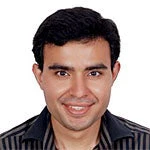
Les données concernent entre autres les élèves de Port Loko, Sierra Leone. (Photo: Kabira Namit/Banque mondiale)
Note: This blog is specifically about Sierra Leone’s successful transition to a digital school census but has broader implications for other countries who plan to adopt digital tools at a wider scale to collect data and monitor education and healthcare facilities in their countries.
In April of last year, the new Minister of Finance of Sierra Leone approached the World Bank with a strong commitment to prioritize education and an intriguing request.
The government wanted to launch their flagship free education program but was facing a significant challenge. With a complicated education landscape and limited resources, increased government financing needed to focus at the most underserved communities. However, data on schools, enrollment and teachers was scant and outdated. The specific locations of the schools in the country was unknown. The government estimated that updating the data using the prevailing practice (having schools fill in paper-based forms, collect forms from schools, manually enter the data into a database, clean and analyze it) would take up to a year.
So, the minister asked if the World Bank could support the government in collecting accurate enrollment and infrastructure data for all the 11,000 schools in the country, including pictures, GPS co-ordinates, data on absenteeism and create a teacher database … and do it all in ten weeks.
It sounded like Mission Impossible. The only way to achieve it within the timeframe was to transition to a digital school census where enumerators collected data directly on tablets and updated the database in real time.
Transition to digital data collection
And so the digital census took place over a period of ten weeks (and several sleepless nights) following five steps:
1 - Form design – The Annual School Census form for Sierra Leone was converted into an ODK (Open Data Kit) format. A number of field restrictions were added to the form to reduce errors in data entry. Making full use of the digital nature of the tool, the form was designed to collect GPS data, photographs of each school and measure student absenteeism.
2 - Procurement of tablets and solar chargers – 600 tablets were required to collect the data within the given timeframe. DFID (Department for International Development, UK Government) loaned approximately 200 tablets for the exercise. The remaining tablets were procured at a cost of US$ 110 dollars per unit. All bloatware was removed and all applications apart from a few that are required for data collection were locked so that enumerators couldn’t download movies and viruses or take selfies.
3 - Training of enumerators – A cascade model was used for training enumerators. World Bank trained 60 Ministry of Education officers over three days. Then, these master trainers trained 600 enumerators over the subsequent week while the Bank provided monitoring and supervisory support.

5 - Analysis and dissemination – A customized dashboard which was updated in real time was available to the core team. Data was analyzed and customized tables and graphs were ready for the government within a week of the data collection exercise. Currently, the Ministry is considering publishing an anonymized dataset on their website to support wider research and analysis of Sierra Leone’s education sector.
How much did it cost?
The total cost for the exercise (including procurement of tablets), hiring of enumerators, transport costs and data analysis for more than 11,000 schools was approximately US$200,000.
What’s the data useful for, anyway?
A lot. Accurate data enabled mapping of all the schools in the country. A full mapping of education-access by merging poverty, transport and census data supports evidence-based decision making for the construction of new schools.

Also, the data is currently being used for the distribution of textbooks and to make decisions regarding teacher deployment (calculating the optimal incentive level for teachers to live in remote areas). Other teams across the World Bank are using the data to map education investment behavior.
Should other countries follow suit?
It depends. Technical expertise can only take you so far. Political will and support from enthusiastic civil servants makes all the difference. It should definitely be considered as there are quite a few positive externalities of this exercise – including putting new technologies in the hands of young people.
It’s important to not get discouraged and aim high. In the words of Nelson Mandela, “It always seems impossible until it's done.”



Join the Conversation